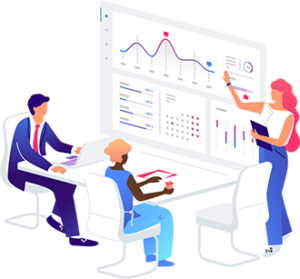First, what is digital dexterity?
It is your organization’s ability to leverage both existing and new technologies in ways that deliver better business outcomes.
This is a better time than ever to talk about the digital workplace. Economic uncertainties and impacts to worker health due to COVID-19 is forcing change in the way we work. We must experience a shift in work to a more collaborative and agile environment with tactical teams forming ad-hoc to deliver more data-driven creativity.
This is the kind of innovation that will keep up with ever changing market and global health conditions.
This article gives clarity on why digital dexterity is so important.
Dexterity is all about skill and innovation.
In today’s diverse and rapidly changing technology-driven marketplace, one of the most fundamental skill-sets for modern workers is the ability to work with data. Data literacy is growing in importance, and organizations are investing in information-as-a-second-language programs.
And innovation itself is a skill. Workers need a formal effort to ensure critical digital-first skills are a priority. This focus is the backbone of making successful business even better.
 It’s also the reason for rampant disruption in some industries. New entrants to the marketplace are better equipped and more aggressive because the foundation of their work is entirely digital-first. While disruption shouldn’t be a focus for all organizations, we can learn from the mindset of the disruptors.
It’s also the reason for rampant disruption in some industries. New entrants to the marketplace are better equipped and more aggressive because the foundation of their work is entirely digital-first. While disruption shouldn’t be a focus for all organizations, we can learn from the mindset of the disruptors.
The key to increasing digital dexterity is in making it a top priority. It requires heavy involvement from not just IT, but also HR, and business unit leadership.
And it’s more than just technology. Workers need modern tools, but they also need diversity of opinion and a dose of outside perspective from other industries.
Corporate culture must adapt to reflect the growing importance on becoming more technology-centric, with a foundation of technology-driven reactive and proactive capabilities.
Here’s a telling perspective from Tanya Cordrey, former Chief Digital Officer at Guardian News and Media:
“The world is getting more complicated. We are still wrestling with the enormous changes in the competitive landscape. Not only do we have 1001 fantastic little start-ups nibbling at our feet, you also have the likes of Google, Facebook and Apple who have decided to park tanks on the lawn of news.
“We have issues around new technologies and where news and content is delivered. We also have shifts in user behavior. All of those are changing all of the time.”
Digital Dexterity Offers Better Business Capability
One of the primary benefits of better digital dexterity is the ability to close the gaps in common processes like customer experience, and product / service fulfillment.
This isn’t always a disrupting factor, but it will lead to increasing profits and business stability.
A nationwide report by Gladly reveals three important findings:
- The quality of a company’s customer service can make (or break) the bank
- Today’s consumers expect zero repeats, one answer, and multiple channels
- 21st-century consumers want service that’s fast, yet still furious(ly) personal
And here are some first-hand statistics (also from the Gladly research) that emphasize the importance of customer experience:
- 92% of consumers will stop purchasing from a company after 3 poor customer service experiences
- Only 29% of companies are providing a desirable communication experience across multiple channels
- 76% get conflicting answers when dealing with the same issue with different representatives
- 59% of consumers say being treated as a unique, valued individual was more important that speed of problem resolution
Digital dexterity supercharges customer experience by providing seamless access to information for both customers and support personnel. It also ensures continuity of access to critical information and communication pathways.
Customers expect to be able to use at least 3 types of channels to conduct business. While phone, email, and chat see the most demand, other channels like in-person, SMS, self-service, and social media are gaining popularity.
The ability to provide not just access to these channels, but also continuity of high standards for service is critical.
Digital Dexterity Enables Fast Response to New Demands and Opportunities
New technologies, changing customer expectations, and shifts in industry best-practices all contribute to the possibility of disruption. Digital dexterity allows organizations to naturally adapt and mold processes and resources to changing demands.
This adaptability goes two ways. Not only do organizations pivot to respond to changing demands, they also take advantage of changing market and business opportunities to gain more market share and increase profits.
Every Enterprise has the Potential
Capgemini, a global leader in consulting, technology services, and digital transformation has identified 4 critical dimensions to digital dexterity.
- Having a digital-first mindset – Discovering and prioritizing digital solutions
- Digitized practices – Digitizing all areas of operations and developing collaborative working and learning
- Empowering talent – Focusing on digital IQ, and key skill required to engage in all things digital
- Access to data and collaboration tools -Sharing intelligence across the organization will drive innovation
While not every business is at risk of disruption from competition, risk of decreasing customer engagement and loss of potential revenue is always a reality. This is especially true in today’s economic uncertainties surrounding COVID-19.
Digital dexterity will always be an important factor in achieving greater business outcomes, and getting the most out of any past or future technology investment.